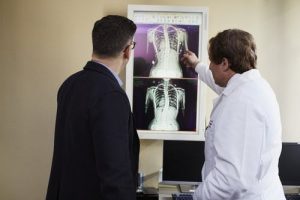Laser technology has been the most significant advancement in modern medicine and dentistry. They are allowing physicians to put all their other instruments out of their arsenal and provide less surgical, less invasive treatments and better outcomes than they have ever had before.
Lasers produce energy by emitting light; however, their precise role in dentistry varies based on the method used. Lasers are used as a cutting instrument during surgical and other restorative dental treatments, replacing sensitive dental equipment or vaporizing damaged or decayed tissues, leaving healthy tissue untouched. It acts as a heat source to speed up tooth whitening. It speeds up and enhances the effects of bleaching chemicals.
How does Laser Dentistry Work?
One of the significant advantages of dental lasers is that they’re suitable for people who suffer from any level of dental phobia. They do not employ sharp instruments so that you won’t experience the sounds and vibrations of the dental drill and the scraping on your teeth. Lasers provide a more peaceful and more pleasant dental experience and help many patients overcome their anxiety about dental visits.
Laser Cleanings
Although some individuals appreciate feeling clean straight from the dentist’s chair, most people dislike cleaning. Low-level lasers target and destroy tartar and plaque without using painful procedures like scraping tartar off your teeth or around the gum line. Traditional cleaning procedures can irritate the gum tissue, leading to swelling, bleeding, and pain. However, laser cleanings let healthy tissue remain, which allows for more comfortable cleaning.
Laser Gum Disease Treatment
Traditional treatments for gum disease include sharp instruments and invasive procedures such as scaling, root planing, gum grafting, and gum surgery. In contrast, laser periodontal treatment gets to the root of the condition, tackling the issue at the bacterial level and reconnecting the gums to a healthy environment.
So you don’t have to treat and retreat; laser treatment for gum disease is more comfortable, gentle, and provides better results. A laser cleaning focuses mainly on the visible part of the tooth’s crown and buildup around the gum line. Periodontal therapy is a more profound procedure under the gum line, eliminating tartar and plaque while focusing and killing the infection while remaining healthy tissue.
Tooth Decay and Root Canals
Lasers can help you if you have a cavity or an infected tooth. Lasers can get rid of decay inside a tooth and prepare the surrounding enamel to make a tooth-colored crown. When your tooth has become infected and you require a root canal, lasers can assist your dentist in eliminating the infection without risk and in a safe way for the tooth. Dental clinics like Foote Family Dental services in Gonzales use lasers on some of their procedures.
Biopsies and Lesions
Lesions and abnormalities of the tissues in the mouth can be significant issues; therefore, using lasers is possible in a way, and thankfully. Biopsies, which involve removing one small amount of oral tissue to check for oral cancer, are possible using lasers.
Traditional biopsies can be more uncomfortable and painful than biopsies using lasers. Lasers also can treat sores caused by cankers and eliminate dental lesions. Your local dentist can perform a common root canal therapy.
Teeth Whitening
The dentist uses a laser and a potent bleaching gel for teeth whitening. The treatment usually entails using a barrier made of resin, which is light-curable, to keep the gum line from being damaged. The teeth are bleached using a hydrogen peroxide whitening gel explicitly made for use on dental.
Hydrogen peroxide is the active ingredient in tooth whitening products. The stains present in the crevices between the enamel are removed and disintegrated using hydrogen peroxide. The pigments are discolored in this process, giving the appearance of lighter teeth. You can view additional information on this page.




